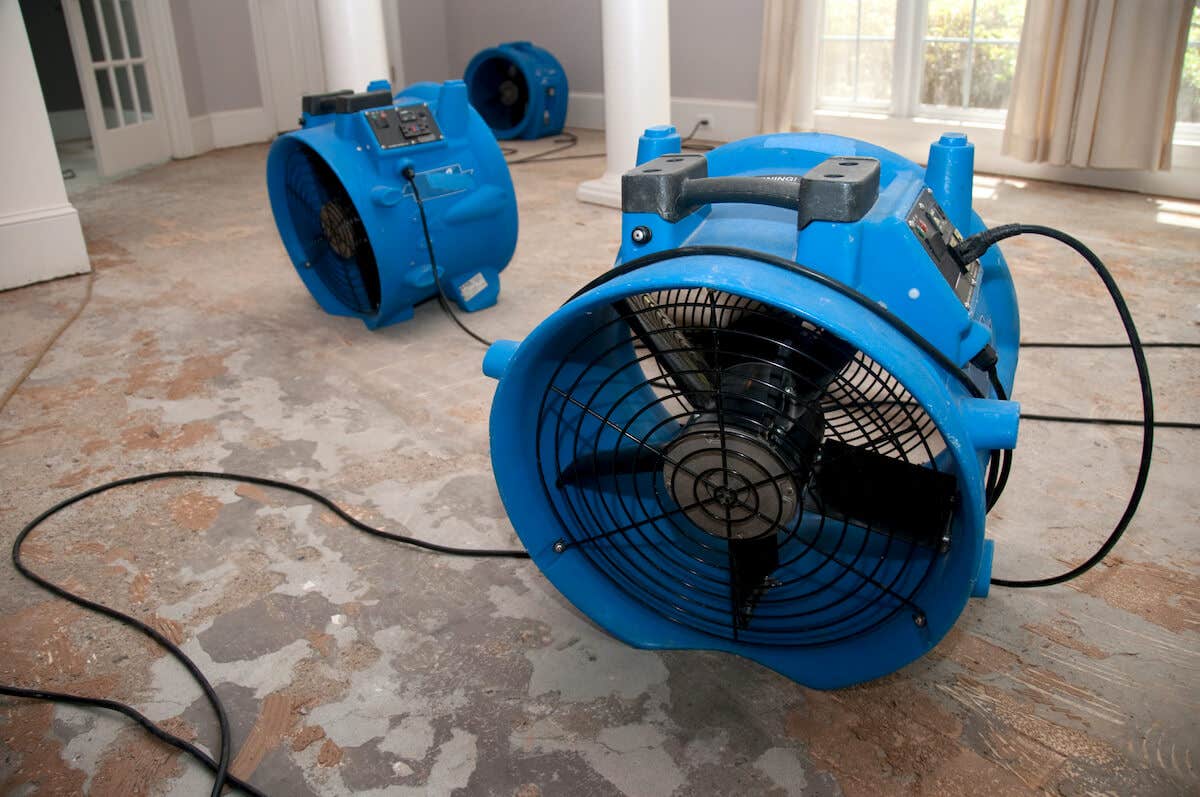The good news is that many homeowners insurance policies cover mold damage, at least to a certain point. What that point is largely depends on the details of your policy and the cause of the mold.
Why is this such good news? Because mold can occur in just about any home, and when it does, it creates dangerous and unhealthy conditions that can cost a small fortune to clean up.
Let’s look at how homeowners insurance covers mold and how you can minimize the risk of mold taking over your home.
When does home insurance cover mold?
Your home insurance is most likely going to cover damage from mold when it’s caused by sudden or accidental circumstances. If mold is the result of neglect or poor maintenance, then your damage probably won’t be covered.
Mold also has to be the result of a covered peril for your insurance company to help pay for the damage. As an example, let’s say a tree branch damages your roof and leads to a leak that causes water damage and subsequent mold growth. Most homeowner's policies cover damage caused by a falling object, so they’re likely to pay for at least some of the mold damage that follows.
That brings us to another important question: What perils does a homeowners policy cover? The answer depends on the type of home insurance you have.
HO-3 policies are the most common type of home insurance, and they insure all perils except for those that are specifically excluded by the policy language. Other policy types, like an HO-1 or an HO-2, are named peril policies. These only insure you against damage caused by the perils listed in the policy.
This isn’t to say that an HO-3 policy definitely covers mold and an HO-1 definitely doesn’t. Instead, you want to check what perils your policy insures so you have a better idea of when mold in your home may be covered.
Scenarios where mold damage isn’t covered
Home insurance is intended to protect you from financial loss from sudden, accidental damage. The following scenarios present some circumstances that are not sudden or accidental and so mold damage is not covered.
Lack of maintenance
When mold occurs due to poor maintenance, the damage isn’t covered. An example is mold that occurs due to a small leak in the roof that has gone unrepaired.
Wear and tear
As homes age, they become more susceptible to mold, in part because they’ve spent more time exposed to weather conditions that make mold grow. Mold that simply occurs over time is typically considered normal wear and tear, so it’s not usually covered. This makes regular and routine maintenance critical in protecting the value of your home.
Policies with absolute mold exclusions
Some policies may have an absolute mold exclusion provision. This is a straightforward policy exclusion that means damage from mold is not covered under any circumstances.
These exclusions are relatively rare in homeowners insurance policies, but you should investigate whether your policy has one.
Supplemental insurance options to improve mold coverage
There may be supplemental coverage available to help improve the mold damage coverage of your policy. Often, this additional coverage takes the form of an endorsement that you add.
Water backup coverage
Water damage caused by a sewer backing up or a sump pump overflowing is often excluded from your basic policy. As a result, so is the mold that the water damage might cause. The answer to this is a water backup endorsement.
Hidden water damage coverage
Some policies don’t cover water damage that occurs gradually. Unfortunately, some leaks happen where you can’t see them, like behind appliances or in walls. Hidden water damage coverage can help pay for repairs and mold remediation in these situations.
Filing a mold damage home insurance claim
These simple steps can make filing a mold damage claim easier.
Step one: Stop additional damage
Preventing more damage is a key part of filing a claim. If there’s water leaking, find the shut-off valve so you can stop the problem from getting worse. You also want to wipe up water to reduce the chances of mold.
Step two: Document the damage
Make a list of every item that was damaged, and take pictures or videos of the mold and water damage. Next, create a timeline from when the loss happened to when the mold started growing so the connection between the two are clear.
This might also be a good time to get a mold inspection. A licensed mold inspector can determine the cause and extent of the mold. A mold inspection may help you if a claim is denied.
Step three: Contact your insurer
Most insurance companies have a way to file claims online, but at the very least, you should be able to call your insurer’s claim department or your agent. Once you’ve filed, stay in contact with your insurance company to assist in its investigation.
Prevent mold with good home maintenance
Regular home maintenance is key to keeping mold at bay. For example, you want to:
-
Ventilate your home. Make sure your home has proper ventilation and an efficient HVAC system.
-
Keep your roof updated and watertight. Age can cause asphalt shingles to become brittle, resulting in leaks.
-
Fill cracks with caulking if they could let water in. Older windows should be re-caulked or replaced as they age.
-
Update windows and doors to prevent leaks. Even light wind and rain can cause windows and doors to leak water. This moisture can result in mold around windows and entranceway doors.
-
Maintain plumbing and appliances that use water. Areas under sinks, around sinks and tubs, and near appliances like refrigerators and washing machines are susceptible to mold.
-
Repair damage when you see it. The impact of mold will only get worse, so clean it up as soon as you see it.
Not only does mold weaken the infrastructure of your home, exposure to it in even relatively small amounts can cause illness. Worse? People with allergies, respiratory conditions or who are otherwise at risk can get seriously ill. So, as with most home maintenance projects, an ounce of prevention is worth a pound of cure.
How to test for mold in your house
The best thing to do if you suspect you have mold is to hire a professional to conduct a test. However, Family Handyman says you can smell mold and test for mold by dipping a cotton swab in diluted bleach (one part bleach to 16 parts water) and dabbing it on the wall. If the spot grows lighter quickly or keeps coming back after cleaning, then it could be mold.
Damp and humid areas are more prone to mold, so you should check for growth in these areas:
-
Bathrooms, bathtubs, and showers
-
Behind your refrigerator
-
Below your sinks
-
Beneath stacks of newspapers or cardboard
-
Behind drywall in spaces that contain plumbing lines
-
Behind the wallboard around leaking windows
-
In ventilation ducts
-
Under carpeting that was once wet
-
Behind acoustic ceiling tiles, if your roof leaked
-
Behind any drywall that has experienced flooding
Protect your home from mold and insurance gaps
Mold can be unhealthy, damaging, and expensive to mitigate. There is some good news: Mold is generally preventable through routine maintenance. If you have damage from mold, it could be covered by home insurance if it results from a covered peril.
Some other important factors to keep in mind include:
-
Consider adding optional coverage for better protection.
-
Regularly inspect your house for mold in mold-prone areas. This is particularly important if you live in a hot and humid region.
-
Act to resolve mold quickly to minimize damage and limit unhealthy conditions.
Contact your insurance provider to determine the specifics of mold coverage for your home insurance policy.

